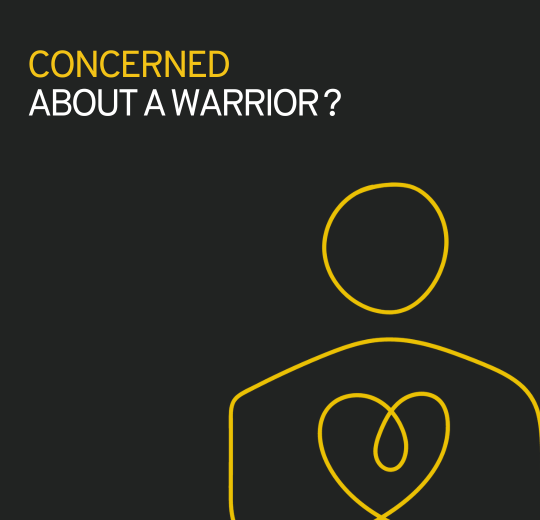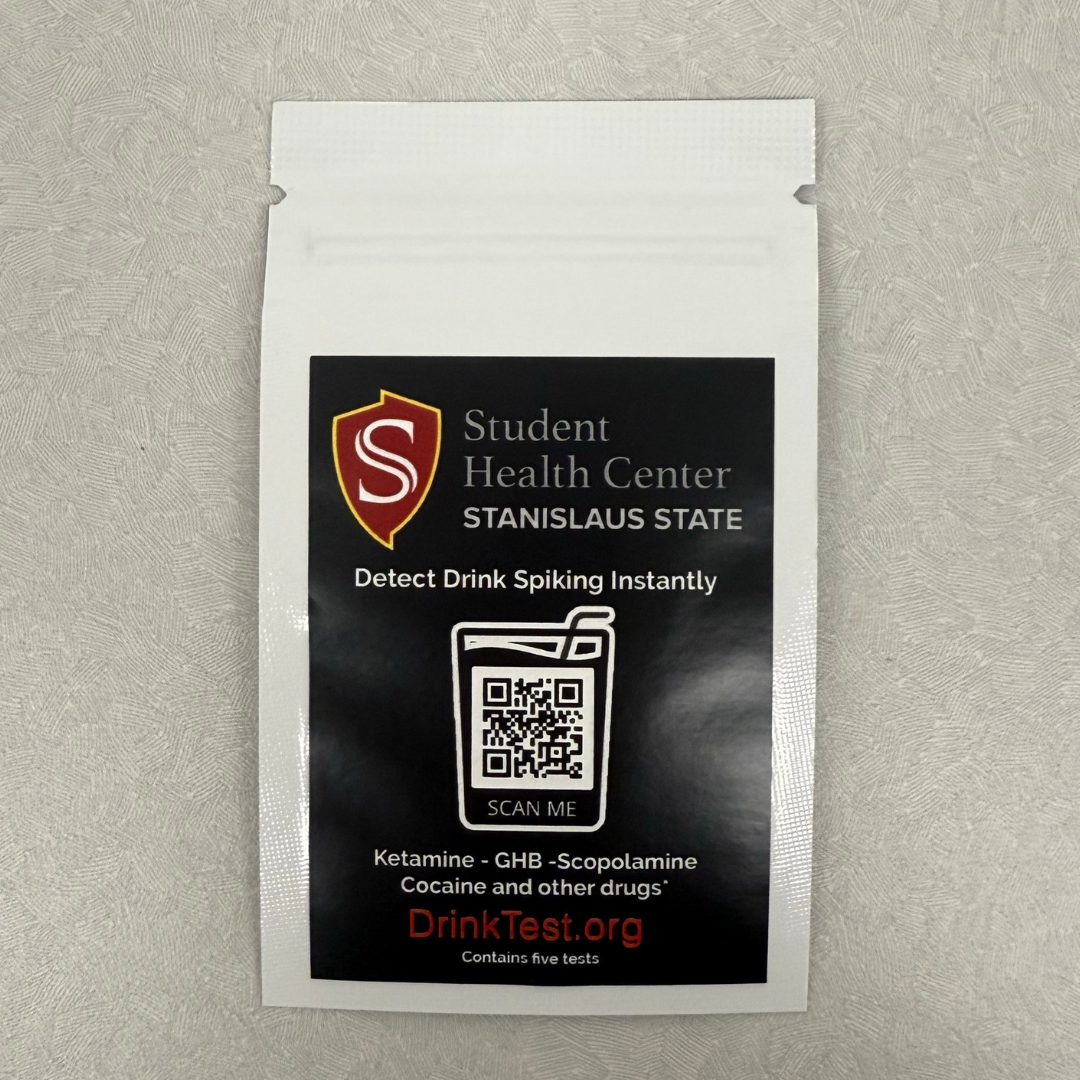The Student Health Center provides free resources to support your safety. Students are welcome to stop by the Student Health Center - its confidential, no appointment or ID necessary. Simply walk in, request the resource and a staff member will provide a brief demonstration. You will also receive written information on how to access an in-depth training video for additional guidance.
Students can access:
-
Drink covers to protect beverages.
-
Drink spike test strips to check
-
Fentanyl test strips to detect fentanyl.
-
Naloxone (Narcan) to reverse an opioid overdose.
Drink Spiking
Drink spiking occurs when someone adds alcohol or other substances to another person’s drink without their knowledge. This can put individuals at serious risk, leaving them vulnerable to harm or unsafe situations.
Know the Warning Signs
- Feeling lightheaded or faint
- Sleepiness
- Nausea
-
Headache
- Loss of reflexes
- Feeling "out of it" or unable to think straight.
- Speech difficulties
- Loss of consciousness
Opioid Overdose
An opioid overdose occurs when a person takes more opioids than their body can safely process. This can slow or stop breathing, making it a life-threatening emergency that requires immediate attention.
Know the Warning Signs
- Unresponsiveness to voice or touch
- Slow, irregular or stopped breathing
- Pinpoint pupils (the center part of the eye is abnormally small)
- Pale, clammy skin
- Blue or purple fingernails and lips
-
Slow heartbeat or low blood pressure
In Case of an Emergency
- Notify a trusted individual at the setting of the situation.
- Call 911 and seek professional medial attention. (Medical Amnesty laws provide protection for individuals who seek professional help during emergencies.)
- Always stay with anyone who may have experienced an opioid overdose or drink-spiking until help arrives.
Contact StanCares
StanCares promotes a safe, supportive environment by addressing student needs with intervention and coordinated support. If you or someone you know needs assistance, StanCares can help with a personalized plan and timely follow-up.

How to Use These Resources
For more information or guidance, contact the Student Health Center at (209) 664-6551 or visit us for personalized assistance from staff.
Step 1: Prepare Your Drink
- Ensure your drink is in a standard cup, glass or can.
- If using a straw, insert it into your drink before applying the cover.
Step 2: Apply the Drink Cover
- Take the cover and stretch it over the top of your cup or can until it fits securely.
- If the cover feels loose or doesn't fit, try adjusting it for better coverage.
Please note:
- Never leave your drink unattended, even with a cover.
- If your drink tastes, smells or looks different than expected, stop drinking it.

Step 1: Prepare Your Test Strip
- Remove a test strip from its packaging, being careful not to touch the test squares.
Step 2: Apply a Drop of Your Drink
- Place a small drop of the drink onto both the pink and yellow test squares.
- Do not dip the test strip directly into the drink.
Step 3: Observe the Color Change
- Wait 30 seconds to a minute for the test squares to react.
- If the test squares remain pink and yellow, your drink is safe to continue drinking.
- If either the test squares changes to orange, grey or blue, your drink has been potentially tampered with and should be disposed of.
Please note:
- These strips can detect GHB, Cocaine, Ketamine, Scopolamine and other amine-based substances, but smaller amounts may go undetected.
- Some drinks, such as those that are red in color or milk-based, may cause a false positive result.
- A negative test result does not guarantee the drink is safe, as it may contain other harmful substances. If you have any doubt, do not drink it.

Fentanyl is a powerful opioid, often found in counterfeit pills or powders. To stay safe, it's important to only take medications prescribed to you and avoid using illicit substances. Fentanyl testing strips can help detect fentanyl, offering an added layer of safety when you're unsure about the contents of a substance.
Learn how to use fentanyl test strips through the CDC's resource page.

This safe, easy-to-use medication can reverse the effects of an opioid overdose when administered promptly, potentially saving lives in situations where immediate medical assistance is not available. Naloxone does not require any medical training or authorization to use.
Learn how to use Naloxone (Narcan) through the CDC's resource page.
Additional Resources
- Counseling and Psychological Services (CAPS): CAPS offers confidential mental health support to help students manage stress, anxiety and other personal situations. (See Alcohol & Substance Abuse)
- University Police Department (UPD): UPD operates 24/7, serving the campus and surrounding area. With sworn police officers, dedicated employees and student assistants on staff, UPD ensures safety and security for the university community.
- California Department of Public Health - Overdose Prevention Initiative: This initiative provides resources and education to prevent opioid-related overdoses and promote harm reduction strategies.
- Centers for Disease Control - Fentanyl Facts: The CDC offers important information about fentanyl, including its risks, prevention strategies and how to respond in case of an overdose.
- Substance Use Education and Prevention (Stanislaus County): This program provides resources and guidance specific to Stanislaus county.
- Substance Abuse and Mental Health Services (SAMHSA): SAMHSA provides comprehensive resources and support for individuals seeking help with mental health and substance use concerns.
- Campus Opioid Safety Act (SB 367): Requires campus health centers at most public colleges and universities to provide free Narcan, a nasal spray that can reverse opioid overdoses, to students.
- Fentanyl Test Strip Access (AB 461): Mandates that community college districts and CSU campuses stock and distribute fentanyl test strips while sharing information about their use and availability.
- Drug Testing Device Access (AB 1524): Requires community college districts and CSU campuses to offer free drug testing devices in campus health centers and post clear notices about this resource in prominent locations.
Updated: April 01, 2025